#East Germany
Explore tagged Tumblr posts
Text
Okay, for nine months now we’ve all seen firsthand how American media lies and spreads misinformation about the situation in Palestine and what’s really going on over there. Have you stopped yet to consider what other countries American media is lying to you about?
5K notes
·
View notes
Text
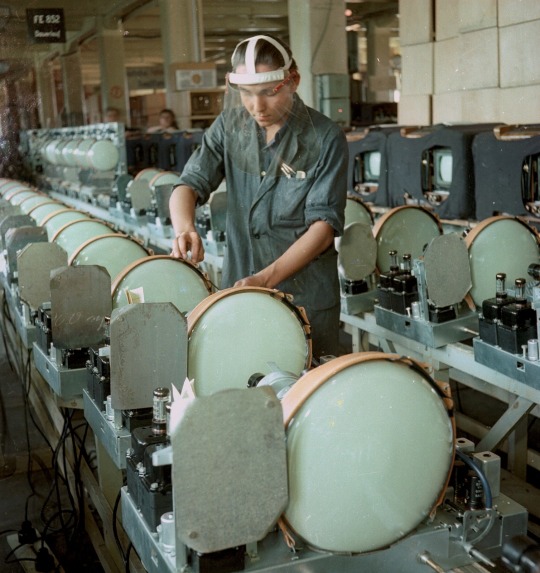
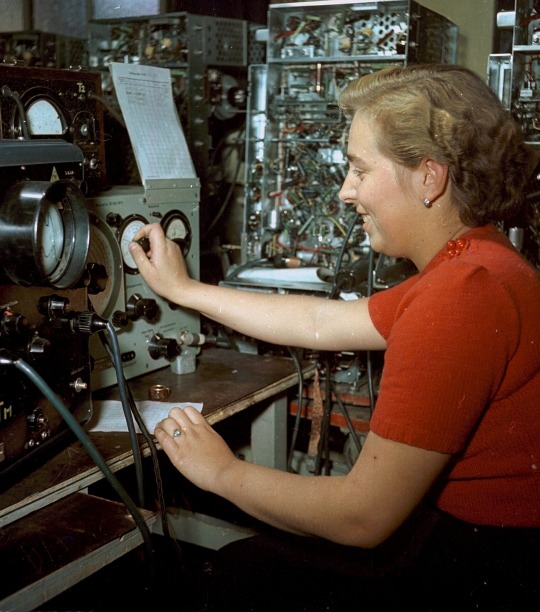
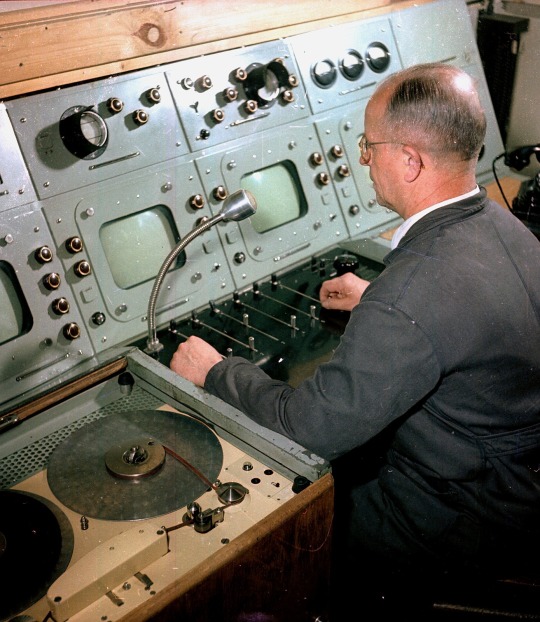
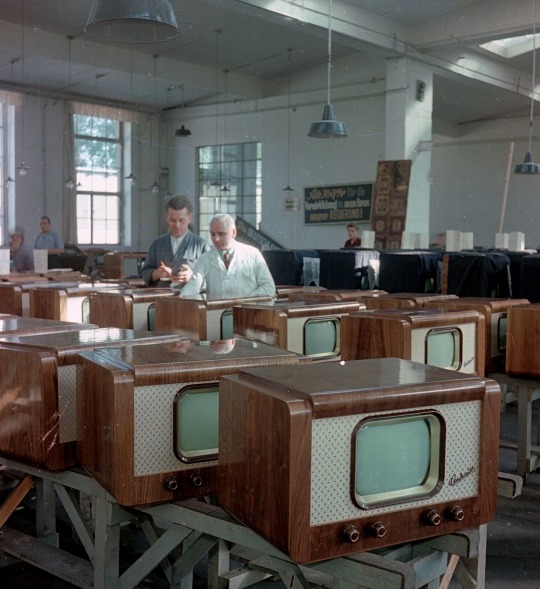
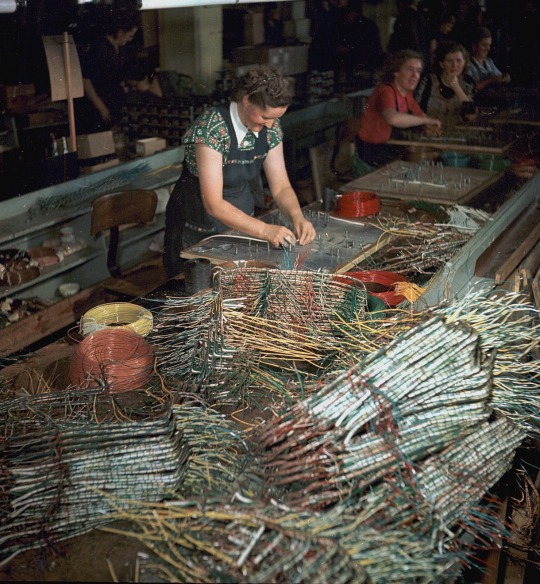
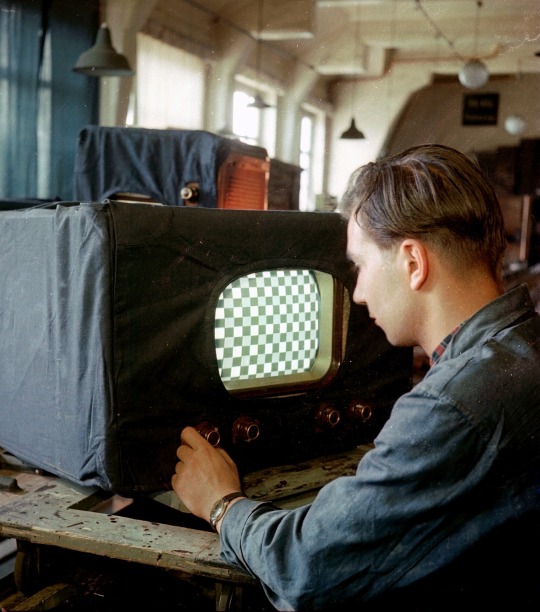
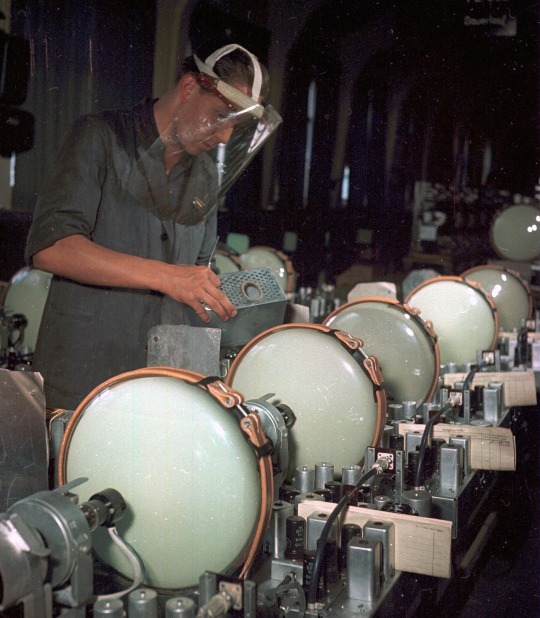

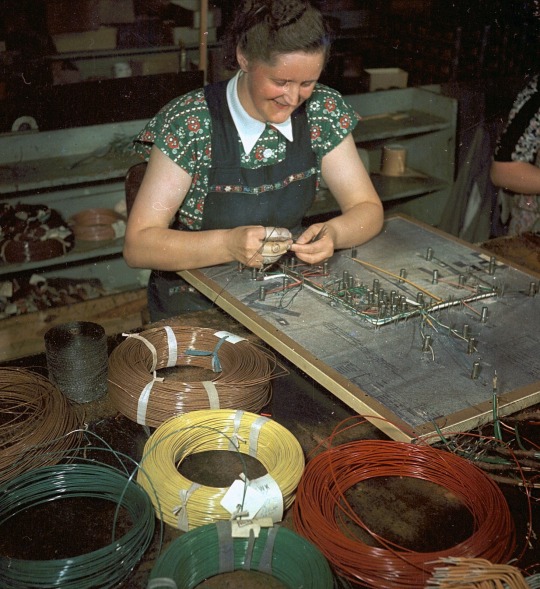
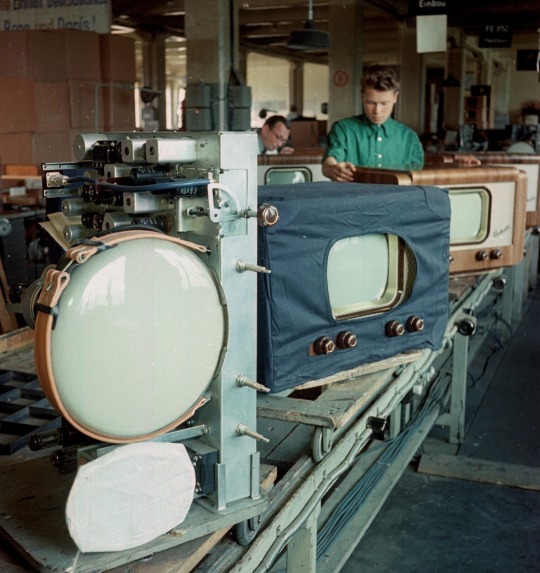
TV factory in Radeberg, East Germany, 1954. Photos by Wolfgang Schröter.
2K notes
·
View notes
Text
















Sibylle Bergemann
- Das Denkmal
1975 – 1986
Sculptor: Ludwig Engelhardt
#Sibylle Bergemann#Ludwig Engelhardt#karl marx#friedrich engels#monument#Marx Engels Forum#berlin#Das Marx Engels Forum#sculpture#east germany#gdr#Deutsche Demokratische Republik#ddr
434 notes
·
View notes
Text

today is the 35th anniversary of the fall of the berlin wall and all the time im seeing people who should be filling this form out
344 notes
·
View notes
Note
It's a good pamphlet and clearly the DDR needed to defend itself. But it doesn't explain why they had to shoot civilians trying to leave the East
I'm not going to say I support the "shoot to kill" orders. I don't. I think they were the wrong move on the part of the GDR and led to unnecessary and tragic deaths. But I also think you have to look at it objectively and in the context of the wall itself.
In 1959, the GDR announced the discovery of classified NATO documents outlining a potential invasion of East Germany using West Berlin as a staging ground, dubbed "Operation DECO II". Neither NATO nor the FRG have ever confirmed or denied the authenticity of these documents, but they align with Western refusal to agree to any plans for reunification that did not involve a NATO-aligned Germany.
In 1960, the Sino-Soviet Split occurs, France becomes a nuclear power, and NATO deploys nuclear missiles in Italy. In June 1961, two months before construction of the Wall, NATO deploys nuclear missiles in Turkey. In October 1961, the USSR detonates the largest nuclear bomb ever created. In 1962, the Cuban Missile Crisis occurs. And in 1963, Kennedy makes his "Ich bin ein Berliner" speech, proclaiming his opposition to communism and the defensive actions of the GDR.
From 1957 to 1961, the head of the West German military was Adolf Heusinger, a former high-ranking Wehrmacht general who helped to plan the Nazi invasion of the Soviet Union. From 1961 to 1964, Heusinger was Chairman of the NATO Military Committee. After Konrad Adenauer had ended denazification in West Germany early, many such instances of former Nazis and Nazi collaborators coming to power and prominence within West Germany had occurred, which is part of the reason why the GDR dubbed the Wall the "Anti-Fascist Protection Wall".
This period marked the highest point in tensions between East and West during the Cold War. Around the world, revolutionary movements were growing, and the capitalists and imperialists were becoming more belligerent in turn. The GDR was dealing with saboteurs and spies and Western agents bribing skilled workers to encourage defection. It is no surprise then that according to a 2011 study into the 136 deaths attributed by the authors to the Wall (and not all of these deaths were of civilians), more than half occurred from 1961 to 1966. However, over 50,000 arrests were made due to border crossing attempts that did not result in death, and by the 1980s there were millions of legal crossings from East to West Berlin approved by the GDR, the vast majority of which later returned to the GDR.
Every death that happened due to the Wall is a death that should not have happened. But the Wall is not some totalitarian construct the evil communists created to trap people and prevent their escape. It was a means of defense against the aggression of the capitalist world towards a vulnerable socialist state forced to host a capitalist enclave. In a just world, West Berlin would never have existed in the first place. In a just world, NATO would have accepted the Soviet proposal for a neutral and unified Germany and Germany would not have been separated for decades. The Anti-Fascist Protection Wall served its purpose and prevented what could have been a major escalation in the Cold War.
When the Wall fell and capitalism was forced upon East Germany, immediately there were major increases in poverty, unemployment, and homelessness, something that occurred across Eastern Europe during the period of neoliberal "shock therapy" as labor protections and welfare systems were removed and state enterprises were privatized. To this day, East Germany remains poorer than West Germany despite over thirty years of glorious free market capitalism to mend the divide. I do not have any concrete numbers, but I would not be surprised if the total number of deaths relating to post-reunification poverty exceeded the number of deaths attributed to the Wall.
Recommended reading:
What You Should Know About the Wall (1962 GDR pamphlet regarding the Wall) Behind the Berlin Wall - Challenge Magazine A Marxist-Leninist Approach to the Berlin Wall - /r/communism The Triumph of Evil - Austin Murphy Stasi State or Workers’ Paradise - Bruni de la Motte & John Green
155 notes
·
View notes
Text

Berlin - Hauptstadt der DDR S-Bahnhof Alexanderplatz East Germany
#berlin#ddr#eastern bloc#east germany#germany#train#vintage#train station#socialist#socialism#postcard#post card
193 notes
·
View notes
Text

Günter Rössler, Berlin, 1963
119 notes
·
View notes
Text




MiG-23 Floggers of the East German (DDR) Air Force
#mig 23#mikoyan gurvich#east germany#ddr#warsaw pact#warpac#soviet era#soviet aircraft#military aircraft#military aviation#cold war aircraft#cold war era#swing wing#variable geometry
62 notes
·
View notes
Text

arghh, i hate you shining star !!
#song: das beat - identität#im going to post more oc art now for mental illness reasons#not as comfort characters but bc i keep beating myself for drawing fanart. lol. lmao even#“lost potential as an artist” or something#because im not worth anything until i make “real” art#what that is im yet to find out#drawing#art#illustration#original character#original art#digital illustration#east germany
81 notes
·
View notes
Text
Poly-Play (In-browser, Arcade, VEB Polytechnik, 1985/1989)
Soviet East German arcade multi-game cabinets - each of these versions has some games the other doesn't. You can play them in your browser here.
Controls: arrows, Ctrl & 5 (1's unneeded here).
Tip: you can make the screen less wide by pressing Tab, then using arrows and Enter to select Video Options and then Screen #0, and turning Maintain Aspect Ratio on, then leaving the menu with Tab.




#internet archive#game#games#video game#video games#videogame#videogames#arcade gaming#arcade cabinet#obscure games#soviet union#east germany#game history#gaming history#video game history#1985#1989#1980s#80s
277 notes
·
View notes
Text

East German Su-22 "Fitter"
151 notes
·
View notes
Text

Control room at a tin smelter in Freiberg, East Germany, 1976. Photo by Eugen Nosko.
1K notes
·
View notes
Text

We are 900 million. Vote for peace and socialism! (1958)
54 notes
·
View notes
Text
One man’s drudgery was another man’s stability. With some justification, Erich Honecker looked with pride at the changes in living standards that had been achieved under his leadership. Despite continuous problems with supplies and being behind technological standards in the West, the GDR felt like a stable country with comparatively high living standards. By design, there was full employment and the subsidized rents, food, cultural offerings and childcare meant that there were few existential concerns. At a time when West Germany was grappling with around 8 per cent unemployment and job security was a worry to many of those who did have work, East German families never really had to fear a sudden loss of income or not being able to pay the rent. By 1987, over half of all households had a car and all had at least one washing machine, fridge and TV. Products that were difficult to get hold of through regular routes were often obtained with the help of Western relatives who ordered them directly through Genex catalogues or provided the currency for a trip to the Intershop. Friends and family in the right places could also help. All in all, the economic shortcomings of the GDR in the mid-1980s, while reaching crisis level behind the scenes, appeared to many East Germans as nuisances rather than existential threats to their way of life. This lack of existential concerns coupled with a solid life–work balance meant that East Germans had a fair amount of money and time on their hands without having to worry too much about having to make the most of it. As a result, they spent a lot more time socializing and enjoying leisure pursuits. Clubhouses, allotment gardens, restaurants, communal barbecue pits and party rooms in apartment blocks were popular retreats where friends, colleagues and neighbours would meet to relax. Accordingly, alcohol consumption in the GDR skyrocketed. By 1988, the average East German drank 142 litres of beer a year and 16.1 litres of hard liquor, twice as much as their West German neighbours and enough to make VEB Nordbrand the largest Schnapps producer in Europe. The American academic Thomas Kochan has argued that this is not due to a need to escape the dreary realities of the GDR, as has often been claimed, but rather to the ‘existential carefreeness’ experienced by ‘a low-competition collective society’. Most East Germans drank not to forget their worries but rather because they had too little to worry about.
Katja Hoyer, Beyond the Wall: East Germany, 1949-1990
66 notes
·
View notes
Text






Norbert did some whimsical wizard shit today
54 notes
·
View notes
Text

Leipzig, East Germany Black and white negative 1970s
#70s#1970s#leipzig#eastern bloc#east germany#ddr#germany#vintage#black and white#negative#photography#socialist#socialism#city scene
137 notes
·
View notes